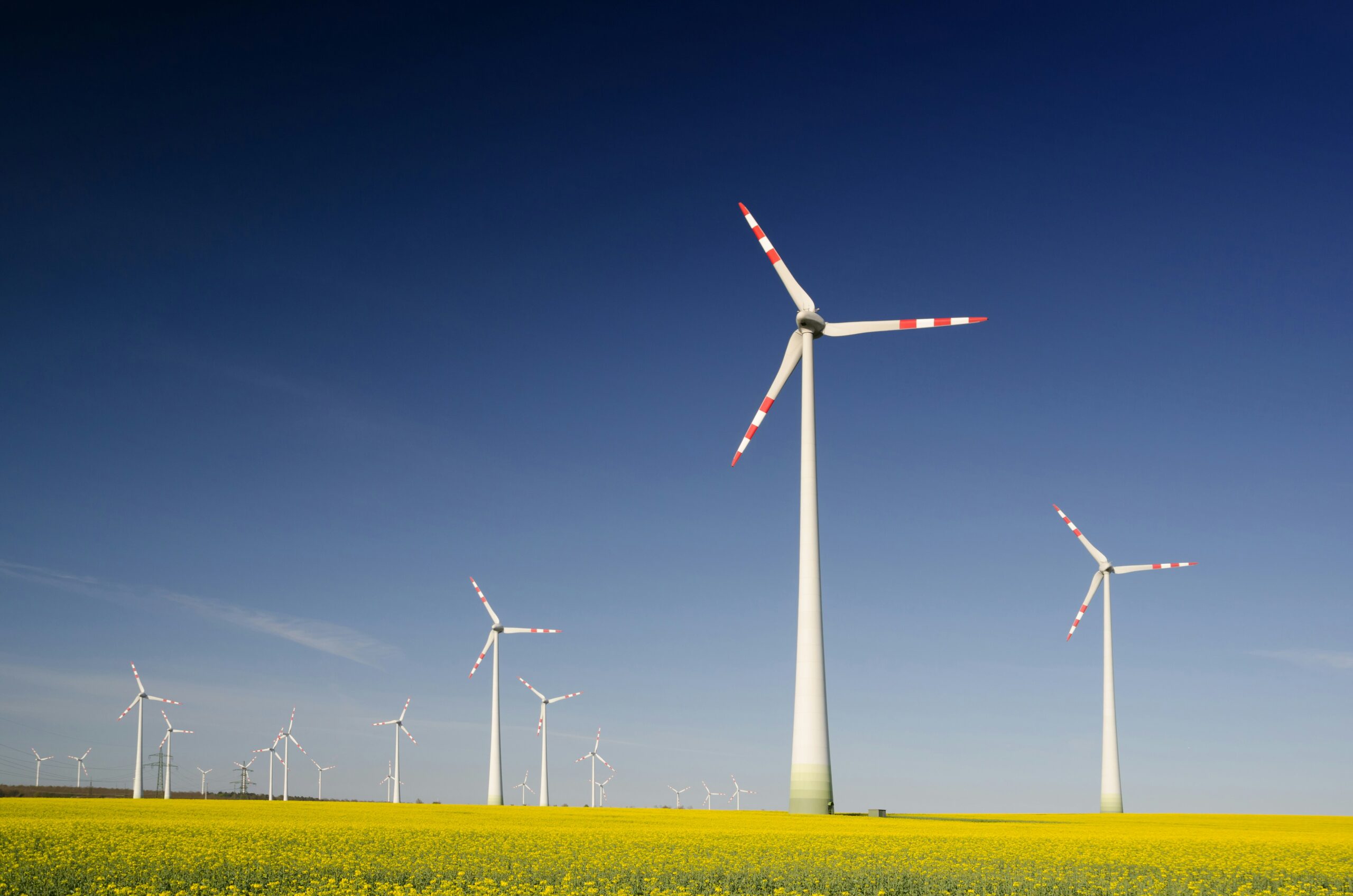Climate change has occurred! We humans triggered it. Where it would lead is not in our hands at least not immediately. Sustainability and climate risk are deeply intertwined, shaping how businesses and societies navigate the future. As climate change continues to intensify, driven by human activities, organizations are increasingly realizing the need to integrate sustainability into their operations to mitigate climate risk. Both concepts are critical in understanding how we can manage environmental, social, and economic impacts to create a more resilient and prosperous future.
Table of Contents
Sustainability and Climate Risk – Is it too late?.
The Role of Sustainability in Mitigating Climate Risk.
Sustainability as a Competitive Advantage.
Earth Overshoot Day: Understanding the Day We Exceed Nature’s Budget
How is Earth Overshoot Day Calculated?.
Real-World Examples of Overshoot
1. Deforestation in the Amazon.
3. Carbon Emissions and Climate Change.
Implications of Earth Overshoot Day.
How Can We Move Earth Overshoot Day?.
Understanding Climate Risk
Sustainability and Climate Risk refers to the potential adverse effects of climate change on natural systems, societies, and economies. These risks come in two forms: physical risks and transition risks.
- Physical risks stem from the direct impacts of climate change, such as rising global temperatures, extreme weather events, and sea-level rise. These can disrupt supply chains, damage infrastructure, and lead to economic losses, especially for industries dependent on stable environmental conditions like agriculture, construction, and energy.
- Transition risks arise from the societal and economic shifts needed to transition to a low-carbon economy. These include regulatory changes, shifts in market demand, and technological advancements that could affect business models, especially in carbon-intensive industries like fossil fuels, manufacturing, and transportation. For instance, carbon taxes, renewable energy mandates, or consumer shifts toward greener products could render existing practices obsolete or costly.
The End of Nature Paperback
Discount -46% ₹620.69/-
A very worthy read for understanding sustainability and nature. 4.4 stars.

The Role of Sustainability in Mitigating Climate Risk
Sustainability is the practice of operating in ways that ensure long-term environmental, social, and economic health. Integrating sustainability into business strategies helps to address climate risk by reducing carbon emissions, conserving natural resources, and promoting social equity. Sustainable practices not only safeguard the environment but also improve organizational resilience, ensuring businesses are better equipped to handle the uncertainties posed by climate change.
- Reducing Carbon Emissions: By adopting renewable energy sources, increasing energy efficiency, and minimizing waste, companies can significantly reduce their carbon footprint. Lower emissions not only contribute to global climate goals but also protect businesses from future regulatory risks and rising costs associated with carbon taxes and stricter environmental regulations.
- Resource Efficiency and Circular Economy: Sustainable practices promote the efficient use of resources, such as water, energy, and raw materials, minimizing waste. This reduces the environmental impact of business operations and helps mitigate the effects of resource shortages exacerbated by climate change. The circular economy model, which emphasizes reusing, recycling, and reducing waste, is gaining traction as a sustainable approach to minimizing resource depletion and waste generation.
- Climate-Resilient Infrastructure: Sustainability also involves preparing for the physical impacts of climate change. Businesses are investing in climate-resilient infrastructure, such as flood defence’s and energy-efficient buildings, to withstand extreme weather events and reduce operational disruptions.
Sustainability as a Competitive Advantage
Incorporating sustainability into business operations offers organizations a competitive edge in the face of climate risks. Consumers are increasingly demanding eco-friendly products and holding companies accountable for their environmental practices. By aligning with sustainable values, businesses can strengthen brand loyalty, attract eco-conscious customers, and open up new market opportunities for green products and services.
Moreover, sustainable companies tend to perform better financially in the long run. According to various studies, businesses that prioritize sustainability enjoy better operational efficiency, reduced costs, and stronger investor confidence. These businesses are also more likely to attract and retain top talent, as employees increasingly seek to work for companies with strong environmental and social values.
Earth Overshoot Day – Understanding the Day We Exceed Nature’s Budget
Earth Overshoot Day marks the date when humanity’s demand for ecological resources and services in a given year exceeds what Earth can regenerate in that year. This concept highlights the unsustainable rate at which humans consume natural resources, such as forests, fisheries, and clean water, and emit waste, particularly carbon dioxide. After Earth Overshoot Day, humanity essentially begins living on ecological “credit,” depleting the planet’s reserves and damaging its capacity to regenerate.
This critical date is calculated by the Global Footprint Network and has been shifting earlier each year, a sign of increasing human overconsumption and environmental degradation. In 2023, Earth Overshoot Day fell on August 2, meaning that from that point on, we had used up a year’s worth of Earth’s resources in just seven months.
How is Earth Overshoot Day Calculated?
The date for Earth Overshoot Day is determined by comparing the planet’s biocapacity (the amount of resources the Earth can regenerate) with humanity’s ecological footprint (the resources we consume and the waste we produce). The formula used is:
Earth Overshoot Day=(Earth’s BiocapacityHumanity’s Ecological Footprint)×365\text{Earth Overshoot Day} = \left( \frac{\text{Earth’s Biocapacity}}{\text{Humanity’s Ecological Footprint}} \right) \times 365Earth Overshoot Day=(Humanity’s Ecological FootprintEarth’s Biocapacity)×365

For example, if humanity’s demand for resources is 70% higher than what Earth can regenerate, Earth Overshoot Day will occur about 213 days into the year, which corresponds to early August.
Real-World Examples of Overshoot
1. Deforestation in the Amazon
One of the most striking examples of ecological overshoot is the ongoing deforestation of the Amazon Rainforest. The Amazon plays a vital role in absorbing carbon dioxide and producing oxygen, often referred to as the “lungs of the Earth.” However, due to illegal logging, agricultural expansion, and infrastructure projects, large swaths of the forest are being cleared, reducing its ability to act as a carbon sink and harming biodiversity.

The accelerated rate of deforestation contributes to global overshoot, as the loss of forests not only reduces Earth’s biocapacity but also contributes to higher carbon emissions. The damage to the Amazon directly impacts Earth Overshoot Day, pushing the date earlier as the forest’s regenerative capacity diminishes.
2. Overfishing in the Oceans
Overfishing is another key example of resource overuse. In many parts of the world, fish populations are being harvested at a faster rate than they can replenish, pushing some species to the brink of collapse. This overexploitation of marine resources means we are consuming more than the oceans can provide sustainably.
For instance, in the Mediterranean and the South China Sea, overfishing has depleted local fish stocks, threatening food security for millions of people and harming marine ecosystems. As fish stocks decline, the capacity of the oceans to support human needs diminishes, pushing Earth Overshoot Day closer to the beginning of the year.
3. Carbon Emissions and Climate Change
One of the largest contributors to ecological overshoot is the burning of fossil fuels, which releases carbon dioxide and other greenhouse gases into the atmosphere. The planet’s forests, oceans, and other ecosystems can only absorb a limited amount of carbon emissions. The excess emissions accumulate in the atmosphere, driving climate change and contributing to more frequent and severe weather events, such as hurricanes, droughts, and floods.

Countries with high carbon footprints, like the United States, China, and many industrialized nations, use far more than their fair share of global resources. If every country consumed resources at the rate of these high-consumption nations, Earth Overshoot Day would occur much earlier in the year. For example, if the entire world lived like the average American, Earth Overshoot Day would fall in March, highlighting the unsustainable lifestyle in developed countries.
Implications of Earth Overshoot Day
Earth Overshoot Day serves as a stark reminder that humanity is living beyond its means. Each year that we reach overshoot, the planet’s ecosystems become more strained, resulting in environmental degradation that can have far-reaching consequences. Some of the key implications include:
- Loss of Biodiversity: As we overuse resources, ecosystems become less capable of supporting diverse species. This can lead to species extinction, disrupting ecosystems and the services they provide to humans, such as pollination, water purification, and climate regulation.
- Climate Change: Overshoot is directly linked to the accumulation of greenhouse gases, which accelerates climate change. Rising global temperatures, melting ice caps, and changing weather patterns are all symptoms of ecological overshoot.
- Resource Scarcity: As we overuse natural resources, the availability of essentials like clean water, fertile soil, and fossil fuels declines, leading to scarcity and potential conflict over these resources. This is already visible in parts of the world facing water shortages, such as Cape Town, which nearly ran out of water in 2018.
- Economic Impact: Overusing natural resources can also have significant economic repercussions. For industries that rely on natural capital, such as agriculture, fisheries, and tourism, ecological degradation can reduce productivity and increase costs, leading to economic instability.
How Can We Move Earth Overshoot Day?
Moving Earth Overshoot Day to later in the year requires both systemic changes and individual action. Here are some solutions that can help reduce humanity’s ecological footprint and push the date back:
- Renewable Energy Adoption: Transitioning from fossil fuels to renewable energy sources like solar, wind, and hydropower can significantly reduce carbon emissions. Countries like Germany and Costa Rica have made substantial progress in adopting renewable energy, which helps in lowering their ecological footprint.
- Sustainable Agriculture: Reducing food waste, improving agricultural practices, and shifting towards plant-based diets can alleviate pressure on land and water resources. Innovations like vertical farming, regenerative agriculture, and precision farming help increase yield while minimizing environmental damage.
- Circular Economy: Embracing the principles of the circular economy, where products are reused, recycled, or remanufactured, can reduce waste and decrease the demand for raw materials. Countries like the Netherlands are pioneers in circular economy initiatives, aiming to reduce resource consumption and waste drastically.
- Policy Changes: Governments need to implement policies that incentivize sustainable practices and discourage overconsumption. Carbon pricing, subsidies for green technologies, and stricter environmental regulations are all examples of policy changes that can push Earth Overshoot Day back.
- Personal Responsibility: On an individual level, people can contribute by reducing energy consumption, supporting sustainable businesses, reducing waste, and making eco-friendly lifestyle choices like biking instead of driving, or reducing meat consumption.

Conclusion
Earth Overshoot Day is a critical marker of humanity’s ecological impact on the planet. As it falls earlier each year, it signals the urgent need for collective action to reduce our ecological footprint. By addressing the key drivers of overshoot—carbon emissions, resource overuse, and waste—we can work toward living within the planet’s means and moving the date later in the year. The future of sustainability depends on our ability to balance consumption with Earth’s capacity to regenerate, ensuring a habitable planet for future generations.
As climate risks grow in severity, the link between sustainability and risk management becomes clearer. Sustainability and Climate Risk are hand in glove as I would like to coin it. Companies that prioritize sustainability not only contribute to global efforts to combat climate change but also protect themselves from the escalating risks associated with it. In the face of mounting physical and transition risks, adopting sustainable practices is both a moral and strategic imperative for long-term resilience and success.
Best Reads






Your point of view caught my eye and was very interesting. Thanks. I have a question for you.
Please go ahead with your question
Thank you for stopping by! I appreciate your kind words. Keep in touch with us on social media –
Website: https://www.learnxyz.in
Facebook: https://www.facebook.com/groups/530719219330002
YouTube: https://www.youtube.com/@LearnXYZ-In
Page: https://www.facebook.com/people/Learnxyzin/61572213195329/
Twitter/X: https://x.com/LearnxyzIn
Spotify: https://open.spotify.com/show/6sjYYVRjgsmpflhpwCm1Qb?si=KpV3gxStQCeUcTeveRHNxQ
We are glad that we have been of value to you. We use affiliates on our webpages, if you prefer, please consider purchasing from the in-page links and advertisements. This will help us support the team and this website. Thanks! Good Day & Visit Again!
Technoob Great information shared.. really enjoyed reading this post thank you author for sharing this post .. appreciated
I got what you intend, appreciate it for posting.Woh I am pleased to find this website through google.
Thanks Ingeborg!